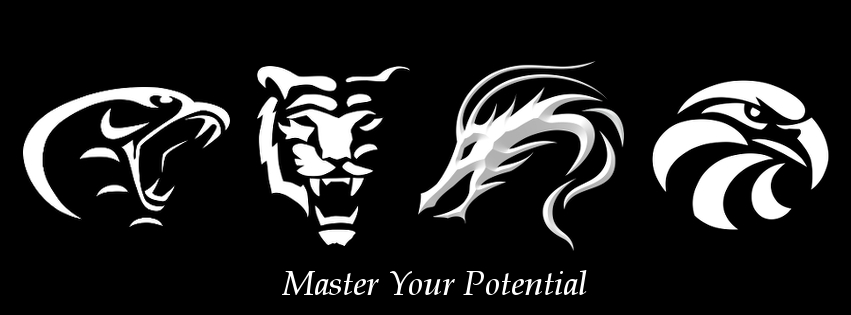Frequently Asked Questions
We hope you’ll find an answer to your question here, but if not, contact us and we’ll get back to you ASAP.
Tao Te Kung Fu is a complete system that incorporates the most efficient techniques and profound ancient philosophy with modern teaching methods.
Tao Te Kung Fu has been developed using techniques predominately from the Kung Fu style of Wing Chun. Wing Chun is almost certainly the most popular Kung Fu style practiced in Europe and the USA, not least, I suspect because the legendary Bruce Lee originally practised it.
“Tao Te” means the virtuous way, and refers to the development of the style within a modern context. There is always the danger that if one becomes entrenched in a tradition eventually lessons look like a sort of historical re-enactment. Tao Te Kung Fu takes advantage of the most recent developments in the neuroscience of skill acquisition and includes influences from other traditions not available to earlier practitioners and is refreshed with decades of real life experience in the security industry.
Many martial art styles require such levels of conditioning, strength and fitness that only young strong men can really excel; and they will often pay the price in later years as the physical punishment of their training takes its toll. Because Tao Te Kung Fu was developed to enable a smaller, weaker fighter to overcome a larger and stronger opponent it is ideally suited to people of all sizes and ages. Not being dependent on vast strength, Tao Te Kung Fu puts an emphasis on speed, with many fast striking combinations and close-range techniques. The training will help you become stronger, fitter and more supple, but your capacity to excel in Tao Te Kung Fu is not dependent on these.
The traditional Wing Chun forms include all the techniques of the style, but are long, complex and often require a lot of work to simply extract a technique and work out its application. Few of the techniques can be used as they appear in the forms which means the student is learning and practicing unhelpful muscle memory. In Tao Te Kung Fu the forms incorporate the techniques in the way they will work in real life.
Each 8 part form is short enough to be remembered easily (this is martial arts, not memory training), and practiced until it can be done without thinking. Each form is put together in a way that if used automatically would deliver a conflict winning combination.
Each of the forms, of course, vary in difficulty but they are grouped into foundation, intermediary and advanced levels. Each group of forms develops the coordination needed to move on to the next. This structure gives a logical system that covers every unarmed Tao Te Kung Fu Technique.
No. Tao Te Kung Fu is an effective real life martial art, not a tournament style.
Historically, many martial arts have tried to ensure their continuation by becoming a sport once the conflict or social condition that lead to their creation was past. The problem with this is that no one wants to take part in, or watch, a sport in which the contestants die within the first two seconds. Therefore a set of rules have to be introduced to make it safe. Which is a bit like a system of gardening that ensures nothing grows. Inevitably the style will change to match the rules, often developing more complicated techniques when the simple move would hurt/kill the opponent and often becoming simpler, in terms of skill, as victory begins to depend on fitness and strength rather than technique. If we trained people to take part in tournaments we would have to miss out many of the most effective techniques. It is not uncommon for people to train to a high level in some styles only to find that when they get attacked their skills are of no use, because no one showed them how to win a fight, only how to keep a fight going for minutes without anyone getting hurt. Having said that, occasionally a student will want to take part in a mixed style tournament, but will have to take some time leaning to limit their use of techniques. Invariably they will end up saying,”I could have won in the first seconds if I’d been allowed to do this or that.”
The simple answer is that most students reach Black Belt in about three years.
The difficult question is, what is ‘Black Belt Standard’? Tao Te Kung Fu uses the most sophisticated training system that enables students to learn the most within the shortest time. You will be learning and developing continuously for those three years. Many styles will require at least 5 or 6 years to reach Black Belt; not because there is so much to learn but because they insist on a level of strength and fitness to compensate for simple techniques. Bear in mind that the most popular Karate styles were originally developed for the Japanese army in the early part of the last century. They were a slimmed down version of an Okinawan system that was intended for fit young men to learn in a matter of weeks. It is an artificial construction to make such styles take years to learn and inevitably means week after week of repetition of simple moves performed with increasing strength.
The greatest risk to health is that you get fitter and find that you have to buy new clothes.
It is an irony that the most brutally effective martial art is also the safest to train in. The training system enables you to learn to use devastating techniques without getting hurt. It is possible for you to develop muscle memory and precise movements without having to deliver your strikes with full force. When you do deliver a strike with full force, it won’t be targeted at your training partner, but at a special pad. Safety equipment and body armour make it possible for realistic sparing without risk to the participants.
Another area of health risk prevalent in many martial arts is that of injury through over training. There is a difference between health and fitness, though people use them almost synonymously. You can become so fit that you sacrifice your health. Historically, martial arts have often been guilty of this. When a warrior was training to survive on a battle field, the difference in fitness level between being able to do a thousand press ups and only a hundred may be the difference between life and death. When being fit enough to fight all day and still be able to run from Marathon to Athens was necessary for survival, then training had to be hard. That’s fine when you are planning to be a professional warrior in the ancient world; when you plan to retire with crippled joints at 35 and die by 45. However, if by “fit” you mean fit to live an active life into your 80s, then you might want to question using the same exercise regime that have been used in many traditions. Do you need to have calluses on your knuckles? or have conditioned your forearms until you have destroyed all the nerves? Is it really a benefit being able to do a hundred press ups in a minute when you are 20 if it means not being able to lift your arms above your head in your 40s?
At Norwich Kung Fu Academy the exercise regime is designed to optimise functional fitness without the risk of future injury through wear and tear.
No, we simply don’t work like that.
It is true that the most effective way to learn a Kung Fu technique is to have it embedded as an automatic reaction to a given stimulus. Reactions that require conscious thought are too slow to work in a real situation so we train in a way that transfers the control of movements from the cerebrum to the cerebellum; think of the difference between brushing your teeth with your usual hand to doing it with the other. However, does this mean that if your friend reaches to brush a fly from your shoulder, with lightning reactions, you will have broken their arm in three places before they can blink? Your unconscious is not that stupid; reactions by-passing your conscious consideration do not entail illogical responses. Even though you can eat with a knife and fork without having to concentrate on what your hands are doing, doesn’t mean that you will accidentally cut up and eat the waiter’s hand if he puts it on the table while you are engrossed in what your friend is saying over lunch.
If anything, rather than a jumpy inappropriate, violent response, you will find the opposite. You will develop more control, be less likely to jump in panic. The increased self esteem and confidence that goes with Kung Fu skills will make you more relaxed, alert and focussed.
Yes. It is a fundamental principal in Tao Te Kung Fu that every technique must be the best for its purpose both in its efficiency and its suitability for everyone irrespective of size or strength.
Make no mistake, although lessons are friendly and fun, the style is brutally effective; the most efficient martial art system available. This is not a sport. No real fight in which Tao Te Kung Fu was being used would last more than a few seconds. Over the course of your training however, you will develop the skill to be able to choose the appropriate level of force, whether you need to only restrain someone, disable them or even kill them.
Also, you will develop the psychological and physiological control necessary to deal with real life confrontations; staying focussed, alert and able to function in the face of threatening situations. These are also skills that will overflow into every aspect of your life; putting you in the driving seat of your life choices.
Well not really. There is as much difference between martial arts instructors as there is between a doctor and John at the pub who has seen every episode of Casualty.
There is a qualification in Self-Defence Instructor (held by Norwich Kung Fu Academy instructors) that includes an understanding of the law as it relates to the use of force in all situations, a detailed understanding of the physiological changes that a person goes through during an assault and techniques for counteracting these. Yet there are people who claim to teach Self-Defence who do not even have this qualification. Would you pay for a first-aid course from someone who was not even qualified, but who owned a first aid kit? I once asked a Kung Fu instructor what real experience he had in martial arts and he listed the training he had done. I had to stop him and say, “So none then.” If you have used a resuscitation dummy, you can’t say that you have experience in cardiac massage, only that you have trained to do it. At Norwich Kung Fu Academy we don’t lightly make the claim of the highest qualified martial arts and self-defence instructors in the region. Most instructors have trained for a few hours a week for a few years. Sifu William has trained in a number of martial arts ‘full time’ for nearly fifteen years, often traveling to train one to one with the best of the best in many different disciplines. If you compare martial arts to academic study, he would be a university professor, where others would have attended an evening course. Sifu Ringer has done his share of competition from regional boxing champion to competing in Karate at national level, but he’s also worked in the security industry, using his skills in literally thousands of real confrontations. He has been recognised as an expert in unarmed combat by private international security firms who have employed him as a manager and consultant. He is also a qualified teacher and in addition to being a Head of Department in High schools has been a mentor for trainee teachers at the UEA.
The breadth of experience, level of skills and depth of knowledge of the instructors is certainly the most important factor in the quality of your training and personal development. If you wouldn’t put your health in the hands of John down the pub, don’t put your Kung Fu training in the hands of an unqualified, well-meaning amateur; both could be a matter of life or death.
Children’s classes are 30 minutes and Adult classes 30 or 60 minutes.
There is a limit to how much one can learn at any one time before it is necessary to let that learning become embedded and integrated with other knowledge and skills. If you try to learn less, you will become bored. If you try to learn more, you will switch off and not take it in.
Lessons are organised so that some sections might take 3 or 4 minutes and others will only be 1 minute before a change of activity. The timings are based on what experience has told us works for most people.
Junior lessons are half an hour in length because this is what works best for them. We are sometimes asked why not have one hour long lesson per week rather than two half hour lessons. The answer is like the answer to, why not eat 21 meals on Sunday and then not eat for the rest of the week?
Adult classes are divided into two half hour sections. The first half hour covers the core curriculum and the second half hour covers the extended curriculum, ensuring that learning is maximised by limiting to optimal time allocation. We do not spend any time doing meaningless repetitions, only focussed and productive repetition. Even the warm up sections are a set of specially developed Chi-Kung exercises that prepare both the body and the mind for improved learning and coordinated physiological integration.
While students pay monthly for a membership that includes far more than simply lessons, the cost per lesson will average out to roughly £7.50 for most adults.
For those junior students (under 12 years of age), training to Black belt can be from as little as £4.96 and includes much the same benefits as the adults with the exception that children won’t learn to use weapons until after Black Belt.
After your first month of training, which is free, payment is monthly by direct debit, but with no long term contract. Payments can be changed, suspended or stopped at any time.
Unlike many clubs, there is NO joining/membership fee and NO licence fee, which can often cost £100+.
We also have the most generous family discounts available. All additional family members receive half price lessons and after the fourth family member, all others train for free.
Concessions are available also to those in special circumstances. Details on request.
No. As a beginner, you will join the Foundation Class.
To ensure optimised learning, classes are skill level specific, enabling focussed attention on the individualised needs of all students.
You will only train with people at a similar level, people on a shared journey, with similar goals. As you progress through the syllabus you will move into the Intermediate class, then the Advanced class and eventually after you reach Black Belt you will move into the Masters’ class. At each stage you will be working with people you have grown to trust as training partners. Classes are never overcrowded, ensuring good individualised attention from 2 instructors. Only those trained as instructors will be assisting you, not well-meaning students who happen to be ahead of you by a few belts.
This separation of developmental levels is another reason why Norwich Kung Fu Academy has the most efficient and focussed training system in the region.





